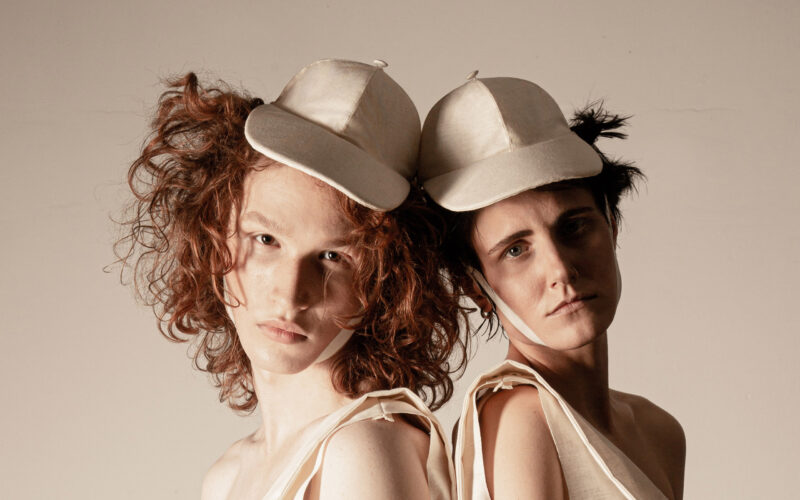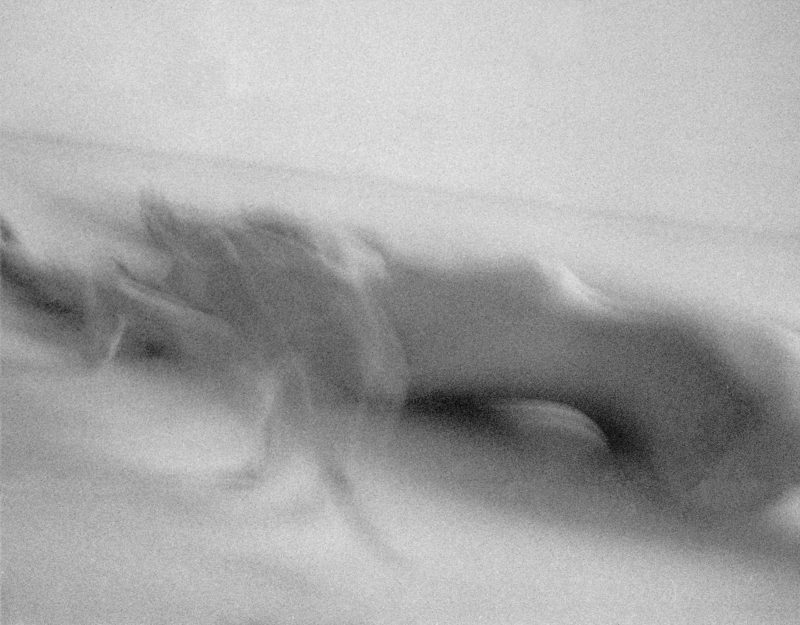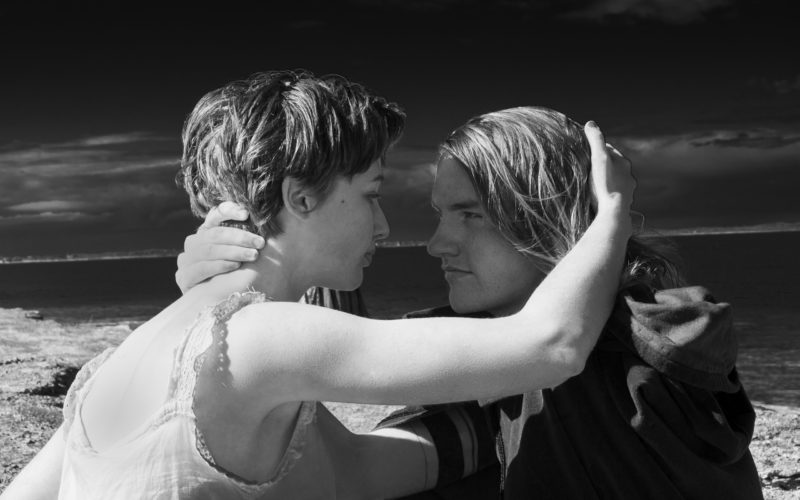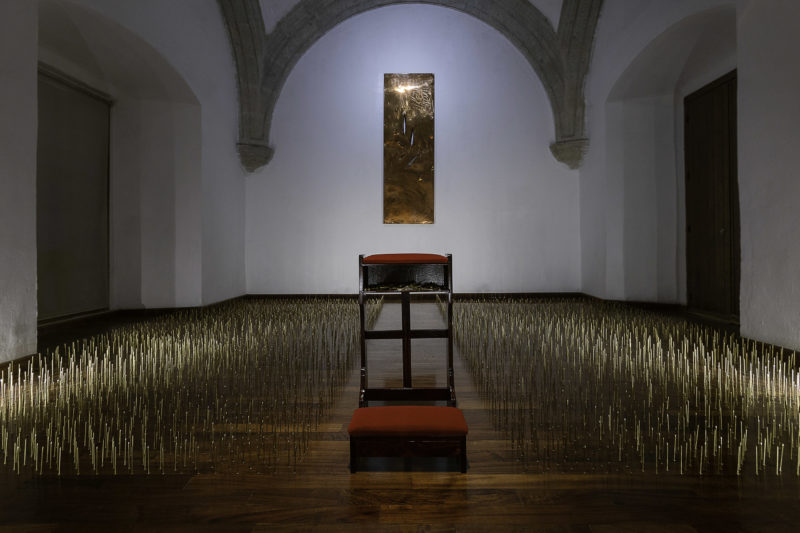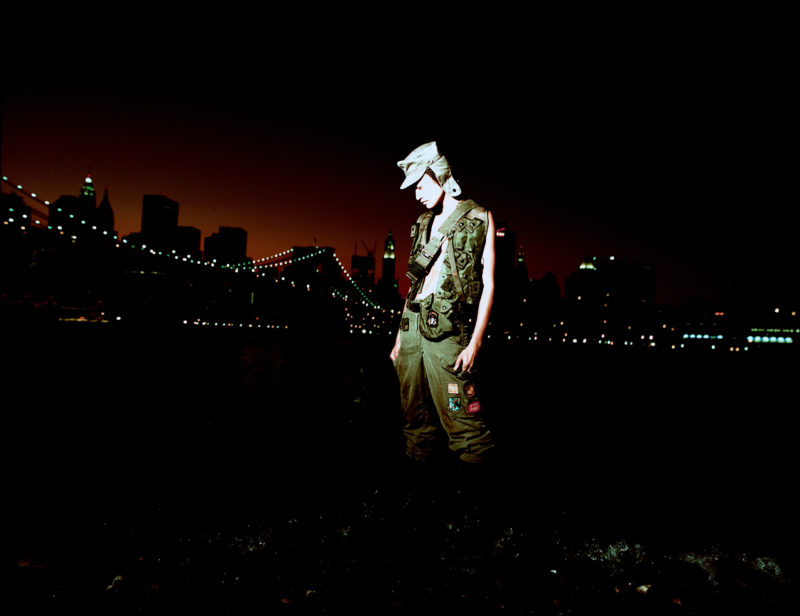a Brief Portrait of GEORGE PLATT LYNES
Since his early death, photographer George Platt Lynes (1907-1955) has been continually rediscovered—for his unerring portraits of major twentieth-century cultural figures, including Colette, Jean Cocteau, Marsden Hartley, and Edith Sitwell; for haunting evocations of George Balanchine’s choreography for the New York City Ballet and its precedent companies; for madly inventive studio-produced images of characters from ancient Greek mythology; and for portrayals of fashionable women destined for Harper’s Bazaar or Vogue. Lastly, and most presciently, he is increasingly known for dreamlike psycho-sexual dramas deploying beautiful young men, and sometimes women, in the frankness of their nudity. In this arena, Lynes was less a photographer of his time than ahead of it.
HE REMAINS DISTINCT
from the pantheon of photography greats. His obsessive catalogue of magically lit male nudes – which were not publicly known in his lifetime – are now widely appreciated, but their provocative homoeroticism perhaps overshadows his total achievement.
For all that, he remains distinct from the pantheon of photography greats. His obsessive catalogue of magically lit male nudes—which were not publicly known in his lifetime—are now widely appreciated, but their provocative homoeroticism perhaps overshadows his total achievement. Photography critics and historians may see the vast remainder of his work as insular and commercial. He barely ever did “street photography” and he was not part of that army of ‘between the wars’ or mid-century photojournalists who informed the masses on events of the day in Life and Look. Neither was he a member of the left-wing Photo League nor inscribed on the list of adventurous witness-to-history photojournalists, like Robert Capa, of the Magnum agency.
Instead, he was allied to several overlapping circles of international writers and cultural mandarins like Gertrude Stein (whose Paris circle he entered at age 18), Janet Flanner, Christopher Isherwood, W.H. Auden, and Katherine Anne Porter. He befriended painters Paul Cadmus, Jared French, and Pavel Tchelitchew, who kept the figurative tradition alive in mid-century American art. And he was connected to two major monstres sacrés—George Balanchine and Lincoln Kirstein—who elevated American ballet to a prominent place in the cultural life of the nation with Lynes documenting “Mr. B’s” choreography and his early stars like Tanaquil LeClerq and Lew Christensen. And not incidentally, at a young age Lynes became the third point in a ménage-à-trois between two prominent American cosmopolitan expatriates, book and exhibition designer Monroe Wheeler, and his partner, the novelist Glenway Wescott. They were his mentors in the late 1920s and early 1930s who encouraged him as he sought to forge a career of some kind, first when he took up writing, and then when he took up the camera.
Lynes’s signature style of high-key lighting and dramatic shadows, with occasional odd props integrated into the portrait or fashion image, tends to place him in the Surrealist camp. He would deny this, as he did in 1941, on the eve of a major portrait retrospective at the Pierre Matisse Gallery, telling a publicist that the only Surrealist picture he had ever taken was his picture of Salvador Dali replete with female nude and lobster. It made for a witty quip, but it also reflected Lynes’s desire to avoid categories, and even more so, to flee aesthetic theories and manifestos. Still, his first major showings included contributions to a Surrealism exhibition at the Wadsworth Atheneum in Hartford, Connecticut, followed by a 1932 show at the landmark New York gallery of Julien Levy, who championed Surrealist practice and partnered with Lynes on creating a group of his early pictures. So while granting Lynes his freedom from a particular label, we would be foolish to think that he wasn’t a product of his era. The stamp of Surrealism influenced visual art in the 1920s and1930s, freeing the creative imagination from repressive moralizing and injecting the erotic whiff of Freudian ideas into the dreamscape of cinema, advertising, and fashion. It’s not for nothing that Lynes had a picture, The Sleepwalker, in the Museum of Modern Art’s 1936 exhibition “Fantastic Art, Dada and Surrealism.”
THE HIGH SHEEN
of Lynes’s iconic style of the 1930s and ‘40s also owes something to two other vernacular modes of picture making: the Hollywood publicity still and male bodybuilding photography, the latter made to appear circumspect in “health and fitness” magazines of the period.
But the high sheen of Lynes’s iconic style of the 1930s and ‘40s also owes something to two other vernacular modes of picture making: the Hollywood publicity still and male bodybuilding photography, the latter made to appear circumspect in “health and fitness” magazines of the period. In both of these genres, the use of backlighting, strong highlights, and deep velvety shadows combined to sculpt faces and bodies, granting mere mortals elegance and polish: see the self-embrace of Robert McVoy [fig. 1] whose arms and elbows jut out from the picture plane, while his half-revealed face plays with massed areas of light and dark. Lynes sought this heightened three-dimensional reality, as if, he said, “one could see right around the subject. I like to give an impression of space, especially before and behind the model … Whether my picture is high or low key, I like the light to come from everywhere at once.”
Indeed, his use of backlit halos makes an “Adoration” of many a Lynes portrait of physical beauty or of artistic genius, while his nude figure studies frequently convey a sense of strange interior dramas suspended in time. Consider this gloriously lit devotion: Marianne Moore [fig. 2]—just one of many he took of the poet who was also a dear friend—transforms this rather plain-looking Victorian schoolmarm, lit front and back, into a fascinating monument to intelligence and reserves of emotion. And to speak of strange dramas, Jeanne Duffy and her mother [fig. 3] presents a moment of naked revelation alongside gestures of maternal shame and distress. Similarly, in Walter Roemer, a picture of a man’s well-tapered back hanging from ropes that snake along his arms and shoulders [fig. 4], we have a scene of implicit erotic bondage mixed with the barest hint of religious martyrdom. The haunting shadow thrown onto the back wall bears, however inadvertently, the earmarks of a Crucifixion.
Lynes may never have become a writer, but a narrative impulse sparks many of his images, as if he were shooting scenes for motion pictures never released. The young Victor Kraft [fig. 5] seems to float in a netherworld; we can’t help thinking of those magical “passages” between this world and the next traveled by characters in later films directed by Lynes’s artist-friend Jean Cocteau. Shades of La Belle et la Bête and Orphée. In what ephemeral and weightless atmosphere is young Victor suspended, or is he—or are we—just dreaming?
To compress a story into a single image was a task Lynes set when he and Glenway Wescott agreed to partner on a book of Greek myths, to be written by Wescott and illustrated by Lynes. The most compelling of these pictures is that of Acteon [fig. 6], the hunter who “disses” Artemis, goddess of the woodlands, for which, as punishment, she turns him into a stag to be set upon by his own frenzied hounds. Lynes’s recreation, with a young man crowned by antlers, his expression caught in an agony of terror, uses extraordinary economy of means to capture the drama. So striking is the picture’s emotional pitch that it is immediately understood by those familiar with the back story, and forces the rest of us to run to our Edith Hamilton—or to Wikipedia—to resolve its agonizing mystery. Alas, the planned mythology book never came off.
FASHION PHOTOGRAPHY
was a means to an end for Lynes, the goal being to earn a steady income. And while he may have chafed at its demands, which, after all, involve selling a product (a dress, a bathing suit, an evening gown), he could nevertheless make beautiful women the center of an imagined moment of theater.
Fashion photography was a means to an end for Lynes, the goal being to earn a steady income. And while he may have chafed at its demands, which, after all, involve selling a product (a dress, a bathing suit, an evening gown), he could nevertheless make beautiful women the center of an imagined moment of theater. For example, in one image he turned an inventively feathered hat into an object of fascination [fig. 7] and in another, he let a woman’s simple gesture—clutching her fur-trimmed coat close at the neck—seem, under high-keyed light, as significant as the equestrian totem that, in shadow, anchors the picture’s background [fig. 8].
In his later career after the end of the Second World War, when Lynes left New York for a stint as head of Vogue’s picture department out in Hollywood, this magician of studio lighting turned like a plant to the sunshine. An at-home portrait of Janet Gaynor [fig. 9], the first recipient of the Academy Award for Best Actress, is remarkable not for deep expressionist shadows, but for available sunlight washing angular architectural elements and, in the brightened amplitude of the space, making the movie star a diminutive ornament to the surrounding geometry. And in Lynes’s tightly cropped portrait of the stretched torso of Francisco Moncion [fig. 10], a dancer with the New York City Ballet, upraised arms cast shadows that define the male figure’s silhouette. The pose creates balanced negative spaces at right and left; thus, the sunlit sky and beach grasses confirm this also to be a picture of a sexy summer’s day.
By this time, as he re-settled in New York, Lynes’s service for the ballet recommenced. His series of shimmering studio recreations from Balanchine’s Orpheus ballet [figs. 11, 12], with dancers Moncion and Nicholas Magallanez stripped nude, are a sublime return to those theatrical lighting effects which were Lynes’s studio manner, here at the service of bodies moving in space, as elegant and graceful as the abstracted lyre Orpheus holds—designed by sculptor Isamu Noguchi. Before the advent of video, Balanchine was sure Lynes’s images would be the supreme surviving document of his choreography.
While Lynes began his career with steps in the direction of Surrealism, his earliest success resulted as much from his portrait work which proved remarkable for the caliber of his subjects—major transatlantic figures in the world of arts and letters. He traveled in the right circles. No one interested in the cultural life of the first half of the twentieth century can afford to miss the testimony of Lynes’s portraits, which gives us a remarkable overview of the period’s zeitgeist. He captured “everyone” from Gertrude Stein to Carmen Miranda, and from Thomas Mann to the young Burt Lancaster. But his less known work—the nudes privately pursued from the beginning of his career until the very end—are now unique proof of a sensibility obsessed with male beauty in its many forms—dancers, actors, tough guys, sailors, flyers soon to ship out during WWII.
Lynes belonged to no particular school of photography and would have been reluctant to espouse any “philosophy” of the picture. Although he was classed among the premier fashion photographers of his day, and worked for Condé Nast among such peers as Cecil Beaton, George Hoyningen-Huene, and Horst P. Horst, he did not have much regard for his fashion work and destroyed a good many negatives shortly before his death—this, despite his affection for many of the models with whom he worked.
When he died at age 48, it was as if he had only lived half his career. But the glass was neither half empty nor half full; it was already overflowing. Lynes is sui generis, a professional photographer not quite like any other, whose best work has the thrill of revelation.
About the Author:
Allen Ellenzweig writes regularly on the arts and culture. His book, The Homoerotic Photograph (Columbia University Press, 1992) was reissued in paperback in 2012. He is currently doing research for a biography of George Platt Lynes.

